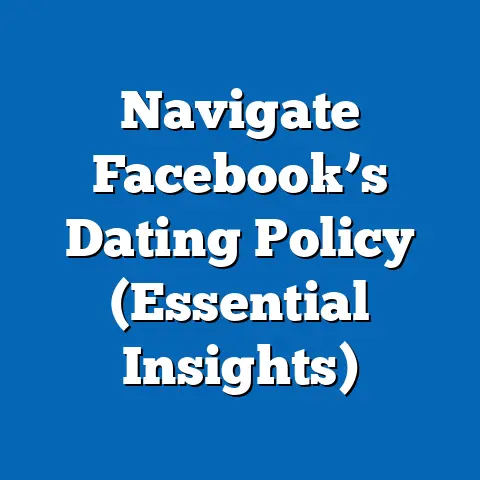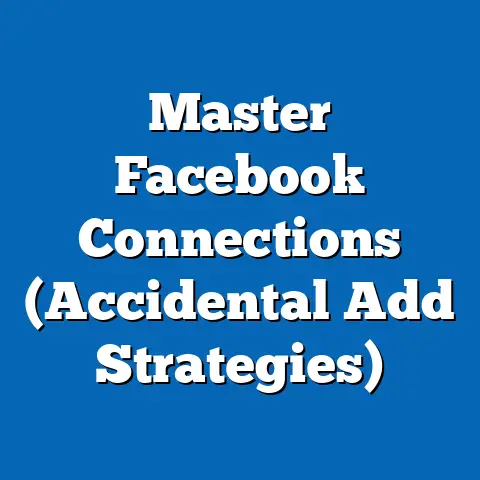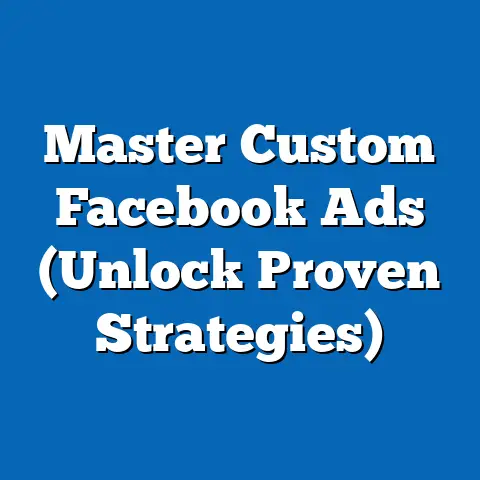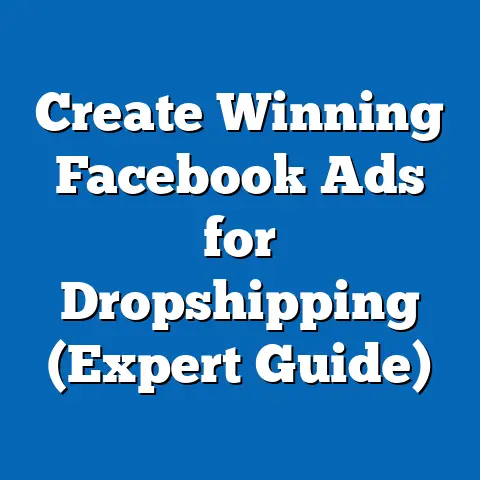Rebrand Facebook Page Effortlessly (Pro Tips Inside)
I’ve seen it happen countless times: a business launches a Facebook page with a bang, full of enthusiasm and fresh ideas. They spend time crafting the perfect logo, writing compelling copy, and building a community. But then, time passes. Trends change, algorithms shift, and the once-vibrant page starts to feel…stale. This is where the myth of Facebook page durability comes crashing down.
The idea that a Facebook page is a “set it and forget it” marketing asset is a dangerous misconception. I’ve encountered business owners who believe that their initial investment in branding is enough to sustain user engagement indefinitely. They think that because they built a solid foundation, their page will continue to thrive on autopilot. Unfortunately, that’s rarely the case.
Think of your Facebook page as a garden. You can’t just plant seeds and expect a beautiful, thriving landscape without ongoing care and attention. You need to weed, water, prune, and adapt to the changing seasons. Similarly, your Facebook page requires regular updates, strategic adjustments, and, sometimes, a complete rebrand to stay relevant and effective.
In today’s dynamic digital landscape, a Facebook page that doesn’t evolve risks becoming invisible. Audience preferences change, new competitors emerge, and Facebook’s algorithms are constantly being tweaked. To keep pace, you need to be proactive, innovative, and willing to reinvent your page to meet the ever-changing demands of your audience.
In this article, I’m going to share my proven pro tips for rebranding your Facebook page effortlessly. I’ll guide you through the process step-by-step, from identifying the need for a rebrand to measuring its success. By the end, you’ll have the knowledge and tools you need to revitalize your page, re-engage your audience, and drive real results for your business. So, let’s dive in!
Understanding the Need for Rebranding
How do you know when it’s time to hit the refresh button on your Facebook page? Often, the signs are subtle at first, but if you pay attention, you’ll start to notice a pattern. Here are some key indicators that your page might need a rebrand:
According to a study by HubSpot, brands that rebrand effectively see an average of a 23% increase in brand awareness and a 17% increase in customer loyalty. These numbers highlight the potential impact of a well-executed rebranding strategy.
The key takeaway here is to be vigilant and proactive. Don’t wait until your Facebook page is on life support before considering a rebrand. Regularly monitor your metrics, gather feedback from your audience, and stay attuned to market trends. By doing so, you can identify the need for a rebrand early on and take steps to revitalize your page before it’s too late.
Next Steps:
- Conduct a thorough audit of your Facebook page.
- Analyze your engagement metrics over the past 6-12 months.
- Gather feedback from your audience through surveys or polls.
- Identify any areas where your page is falling short.
Strategic Planning for Rebranding
Rebranding your Facebook page isn’t just about changing your logo or updating your cover photo. It’s a strategic process that requires careful planning and execution. Here’s a step-by-step guide to creating a successful rebranding strategy:
- Identify Goals and Objectives: What do you hope to achieve with your rebrand? Are you looking to increase engagement, attract new customers, reposition your brand, or simply refresh your image? Clearly define your goals and objectives upfront. For example, a goal might be to increase engagement by 20% within three months of the rebrand.
- Conduct a Competitive Analysis: Analyze how other brands in your niche are positioning themselves on Facebook. What are their strengths and weaknesses? What kind of content are they posting? How are they engaging with their audience? This research will help you identify opportunities to differentiate your page and stand out from the crowd. I’ve found that a simple SWOT analysis (Strengths, Weaknesses, Opportunities, Threats) can be incredibly helpful in this process.
- Define Your Target Audience: Who are you trying to reach with your Facebook page? What are their demographics, interests, and behaviors? The more you know about your target audience, the better you can tailor your content and messaging to resonate with them. Consider creating detailed buyer personas to represent your ideal customers.
- Align with Overall Business Goals: Your Facebook page rebranding strategy should align with your overall business goals. How does your Facebook page support your company’s mission, vision, and values? Ensure that your rebranding efforts are consistent with your broader marketing strategy.
- Develop a Content Strategy: What type of content will you post on your rebranded Facebook page? How often will you post? What topics will you cover? Create a content calendar to plan your posts in advance. Consider incorporating a variety of content formats, such as videos, images, articles, and live streams.
- Choose a New Brand Voice: How will you communicate with your audience on your rebranded Facebook page? Will you be formal or informal? Humorous or serious? Choose a brand voice that reflects your brand personality and resonates with your target audience.
- Update Your Visuals: As mentioned earlier, your visuals are a critical component of your Facebook page. Update your profile picture, cover photo, and other visual elements to reflect your new brand identity. Choose high-quality images that are visually appealing and consistent with your brand aesthetic.
- Plan Your Launch: How will you announce your rebrand to your audience? Will you create a special launch campaign? Will you offer any promotions or discounts? Plan your launch carefully to generate excitement and build anticipation.
I once worked with a small e-commerce business that was struggling to attract new customers on Facebook. After conducting a thorough analysis, we discovered that their Facebook page was not aligned with their overall brand identity. Their page was generic, uninspired, and didn’t accurately reflect the quality of their products. To address this, we rebranded their page to focus on their unique selling proposition: handcrafted, eco-friendly products. We updated their visuals to showcase their beautiful products, crafted messaging that emphasized their commitment to sustainability, and developed a content strategy that educated their audience about the benefits of eco-friendly living. The result was a significant increase in website traffic, sales, and brand awareness.
A key takeaway here is that rebranding your Facebook page is not a superficial exercise. It’s a strategic process that requires careful planning, research, and execution. By following these steps, you can create a rebranding strategy that revitalizes your page, re-engages your audience, and drives real results for your business.
Next Steps:
- Clearly define your goals and objectives for the rebrand.
- Conduct a thorough competitive analysis.
- Develop detailed buyer personas to represent your ideal customers.
- Create a content calendar to plan your posts in advance.
Visual and Content Refresh
Now that you have a strategic plan in place, it’s time to roll up your sleeves and get to work on the visual and content refresh of your Facebook page. This is where you’ll bring your new brand identity to life and create a page that is visually appealing, engaging, and consistent with your overall brand.
-
Updating Profile and Cover Photos: Your profile picture and cover photo are the most prominent visual elements on your Facebook page. They’re the first things people see when they visit your page, so it’s important to make a good impression.
- Profile Picture: Choose a high-quality image that accurately represents your brand. This could be your logo, a headshot of your founder, or a visually appealing product shot. Ensure that your profile picture is easily recognizable and consistent with your other branding materials. Remember that Facebook crops profile pictures into a circle, so make sure the important elements of your image are centered.
- Cover Photo: Your cover photo is a larger, more prominent image that provides an opportunity to showcase your brand personality, products, or services. Use a high-resolution image that is visually appealing and relevant to your target audience. Consider using a cover photo that features a call to action, such as “Visit our website” or “Sign up for our newsletter.” I’ve seen cover photos that dynamically change based on promotions or events, adding a layer of freshness and engagement.
-
Choosing Color Schemes and Fonts: Your color scheme and fonts play a crucial role in shaping your brand identity. Choose colors and fonts that are consistent with your overall branding and resonate with your target audience.
- Color Schemes: Select a color palette that reflects your brand personality and evokes the desired emotions. For example, blue is often associated with trust and reliability, while green is associated with nature and sustainability. Use a color palette generator to create a cohesive color scheme.
- Fonts: Choose fonts that are easy to read and consistent with your brand aesthetic. Use different fonts for headings and body text to create visual hierarchy. Avoid using too many different fonts, as this can make your page look cluttered and unprofessional.
-
Updating Page Description and About Section: Your page description and about section provide an opportunity to tell your brand story and explain what your page is all about.
- Page Description: Write a concise and compelling description that accurately reflects your brand values, mission, and personality. Use keywords that your target audience is likely to search for.
- About Section: Provide more detailed information about your company, products, or services. Include your website URL, contact information, and a brief summary of your brand history.
-
Updating Post Styles: Your post styles should be consistent with your new brand identity and resonate with your target audience. Consider experimenting with different post formats, such as images, videos, articles, and live streams.
- Images: Use high-quality images that are visually appealing and relevant to your target audience. Consider using custom graphics or illustrations to add a unique touch.
- Videos: Videos are a highly engaging content format that can help you connect with your audience on a deeper level. Create videos that are informative, entertaining, or inspiring.
- Articles: Share relevant articles from your blog or other reputable sources. Write compelling headlines and summaries to encourage people to click through.
- Live Streams: Live streams are a great way to interact with your audience in real-time. Host Q&A sessions, product demonstrations, or behind-the-scenes tours.
-
Incorporating User-Generated Content: User-generated content (UGC) is content created by your customers or fans. It’s a powerful way to build trust, credibility, and social proof. Encourage your audience to share their experiences with your brand by hosting contests, asking for reviews, or simply inviting them to post photos and videos. I’ve seen brands that exclusively feature UGC on their pages, fostering a strong sense of community.
Updating Profile and Cover Photos: Your profile picture and cover photo are the most prominent visual elements on your Facebook page. They’re the first things people see when they visit your page, so it’s important to make a good impression.
- Profile Picture: Choose a high-quality image that accurately represents your brand. This could be your logo, a headshot of your founder, or a visually appealing product shot. Ensure that your profile picture is easily recognizable and consistent with your other branding materials. Remember that Facebook crops profile pictures into a circle, so make sure the important elements of your image are centered.
- Cover Photo: Your cover photo is a larger, more prominent image that provides an opportunity to showcase your brand personality, products, or services. Use a high-resolution image that is visually appealing and relevant to your target audience. Consider using a cover photo that features a call to action, such as “Visit our website” or “Sign up for our newsletter.” I’ve seen cover photos that dynamically change based on promotions or events, adding a layer of freshness and engagement.
Choosing Color Schemes and Fonts: Your color scheme and fonts play a crucial role in shaping your brand identity. Choose colors and fonts that are consistent with your overall branding and resonate with your target audience.
- Color Schemes: Select a color palette that reflects your brand personality and evokes the desired emotions. For example, blue is often associated with trust and reliability, while green is associated with nature and sustainability. Use a color palette generator to create a cohesive color scheme.
- Fonts: Choose fonts that are easy to read and consistent with your brand aesthetic. Use different fonts for headings and body text to create visual hierarchy. Avoid using too many different fonts, as this can make your page look cluttered and unprofessional.
Updating Page Description and About Section: Your page description and about section provide an opportunity to tell your brand story and explain what your page is all about.
- Page Description: Write a concise and compelling description that accurately reflects your brand values, mission, and personality. Use keywords that your target audience is likely to search for.
- About Section: Provide more detailed information about your company, products, or services. Include your website URL, contact information, and a brief summary of your brand history.
Updating Post Styles: Your post styles should be consistent with your new brand identity and resonate with your target audience. Consider experimenting with different post formats, such as images, videos, articles, and live streams.
- Images: Use high-quality images that are visually appealing and relevant to your target audience. Consider using custom graphics or illustrations to add a unique touch.
- Videos: Videos are a highly engaging content format that can help you connect with your audience on a deeper level. Create videos that are informative, entertaining, or inspiring.
- Articles: Share relevant articles from your blog or other reputable sources. Write compelling headlines and summaries to encourage people to click through.
- Live Streams: Live streams are a great way to interact with your audience in real-time. Host Q&A sessions, product demonstrations, or behind-the-scenes tours.
Incorporating User-Generated Content: User-generated content (UGC) is content created by your customers or fans. It’s a powerful way to build trust, credibility, and social proof. Encourage your audience to share their experiences with your brand by hosting contests, asking for reviews, or simply inviting them to post photos and videos. I’ve seen brands that exclusively feature UGC on their pages, fostering a strong sense of community.
I remember working with a local restaurant that wanted to rebrand their Facebook page to attract a younger demographic. We started by updating their visuals with vibrant, high-quality photos of their food and店内. We then updated their page description and about section to reflect their commitment to fresh, locally-sourced ingredients. Finally, we updated their post styles to be more engaging and interactive, incorporating videos, polls, and contests. We also encouraged their customers to share their photos and videos on their page, creating a vibrant community of food lovers.
The key takeaway here is that your visual and content refresh should be strategic, intentional, and consistent with your overall brand identity. By following these tips, you can create a Facebook page that is visually appealing, engaging, and resonates with your target audience.
Next Steps:
- Update your profile picture and cover photo with high-quality images.
- Choose a color scheme and fonts that are consistent with your brand aesthetic.
- Write a concise and compelling page description.
- Update your about section with detailed information about your company.
- Experiment with different post formats to find what resonates with your audience.
- Incorporate user-generated content to build trust and social proof.
Engaging Your Audience During the Transition
Rebranding your Facebook page is a big change, and it’s important to communicate these changes to your existing followers in a way that excites and engages them. Here are some strategies for engaging your audience during the transition:
- Teaser Posts: Before you officially launch your rebranded page, start posting teaser content to generate excitement and anticipation. Share sneak peeks of your new logo, visuals, or content. Ask your audience to guess what’s coming.
- Behind-the-Scenes Content: Share behind-the-scenes content that gives your audience a glimpse into the rebranding process. Show them how you’re creating your new logo, designing your new website, or developing your new products. This helps build transparency and connection.
- Interactive Stories: Use Facebook Stories to engage your audience with interactive polls, quizzes, and questions. Ask them for their feedback on your new branding. This is a great way to get them involved in the process and make them feel like they’re part of the team.
- Facebook Live Sessions: Host a Facebook Live session to officially announce your rebrand and answer any questions your audience may have. This is a great way to connect with your audience in real-time and build excitement for your new brand. Consider doing a Q&A with your CEO or a product demo.
- Contests and Giveaways: Run a contest or giveaway to celebrate your rebrand and reward your loyal followers. Offer prizes that are relevant to your brand and appeal to your target audience. This is a great way to generate buzz and attract new followers.
- Explain the “Why”: Don’t just announce the changes; explain why you’re rebranding. Share the story behind the decision and how it will ultimately benefit your audience. Are you improving products, offering better service, or aligning more closely with their values? Transparency is key.
I worked with a non-profit organization that was rebranding its Facebook page to better reflect its mission and values. To engage their audience during the transition, we created a series of teaser posts that hinted at the upcoming changes. We also shared behind-the-scenes content that showed the team working on the new branding. Finally, we hosted a Facebook Live session to officially announce the rebrand and answer questions from their followers. The result was a significant increase in engagement and excitement for the organization’s new brand.
The key takeaway here is that communication is key during a Facebook page rebrand. By engaging your audience in the process, you can build excitement, generate buzz, and ensure a smooth transition to your new brand.
Next Steps:
- Create a series of teaser posts to generate excitement.
- Share behind-the-scenes content that shows the rebranding process.
- Use Facebook Stories to engage your audience with interactive polls and questions.
- Host a Facebook Live session to officially announce your rebrand.
- Run a contest or giveaway to reward your loyal followers.
Measuring the Success of Your Rebranding
Once your rebrand is complete, it’s important to track your progress and measure the success of your efforts. Here are some key performance indicators (KPIs) to monitor:
- Engagement Rate: This measures the level of interaction your audience has with your content. Track your likes, comments, shares, and clicks. A higher engagement rate indicates that your content is resonating with your audience.
- Reach: This measures the number of people who see your content. Track your organic reach and paid reach. A higher reach indicates that your content is being seen by a larger audience.
- Follower Growth: This measures the number of new followers you gain after your rebrand. Track your follower count over time. A higher follower growth indicates that your rebrand is attracting new people to your page.
- Website Traffic: If your Facebook page is driving traffic to your website, track your website traffic from Facebook. A higher website traffic indicates that your rebrand is driving more people to your website.
- Conversion Rate: If your Facebook page is generating leads or sales, track your conversion rate. A higher conversion rate indicates that your rebrand is driving more people to take action.
- Audience Feedback: Monitor audience feedback through comments, direct messages, and reviews. Pay attention to what people are saying about your rebrand. Are they positive or negative? Use this feedback to make adjustments to your strategy.
- Sentiment Analysis: Go beyond simply counting positive and negative comments. Use sentiment analysis tools to understand the overall emotional tone surrounding your brand. Are people feeling more excited, trusting, or engaged after the rebrand?
Facebook provides a wealth of analytics within its platform. Use Facebook Insights to track these metrics and gain valuable insights into your audience’s behavior. I also recommend using third-party analytics tools to get a more comprehensive view of your Facebook page performance.
I remember working with a local business that rebranded its Facebook page to attract a new target audience. After the rebrand, we carefully monitored their KPIs to track their progress. We saw a significant increase in engagement rate, reach, and follower growth. We also saw an increase in website traffic and conversion rate. The data clearly showed that their rebrand was a success.
The key takeaway here is that measuring the success of your rebrand is essential for understanding its impact. By tracking your KPIs and analyzing audience feedback, you can make adjustments to your strategy and ensure that your rebrand is achieving its goals.
Next Steps:
- Track your engagement rate, reach, and follower growth.
- Monitor audience feedback through comments, direct messages, and reviews.
- Use Facebook Insights to track your Facebook page performance.
- Analyze your data and make adjustments to your strategy as needed.
Conclusion
Rebranding your Facebook page is not a one-time task, but rather a continuous effort. In the ever-evolving world of social media, it’s crucial to stay current with trends and audience preferences. By regularly updating your visuals, content, and messaging, you can ensure that your Facebook page remains relevant, engaging, and effective in driving results for your business. Remember, a successful Facebook page is a living, breathing entity that requires ongoing care and attention.
By embracing the tips and strategies outlined in this article, you can revitalize your Facebook page, re-engage your audience, and unlock the full potential of this powerful marketing platform. Don’t be afraid to experiment, innovate, and adapt to the changing demands of your audience. The key is to stay proactive, stay creative, and stay committed to delivering value to your followers.
Now it’s your turn. Take the first step in your rebranding journey and start implementing the tips discussed in this article. I’m confident that with a little effort and dedication, you can transform your Facebook page into a thriving hub of engagement, connection, and business growth. Good luck!






